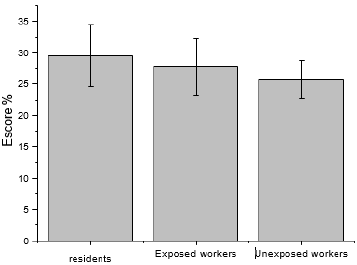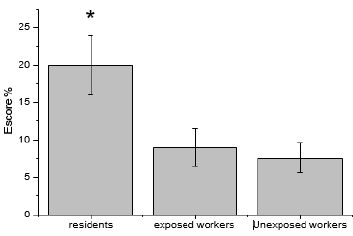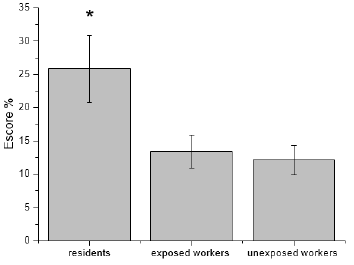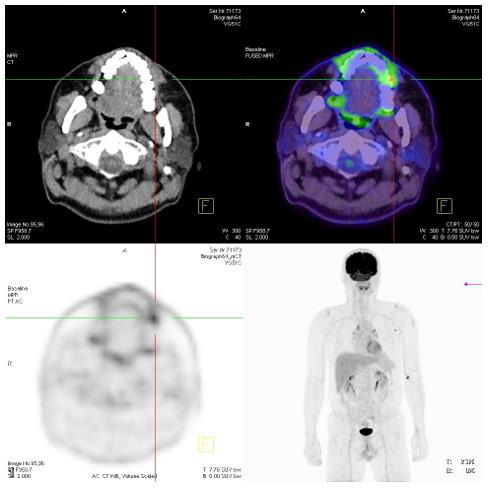An Acute Necrotising Pancreatitis - A Medical Emergency
Introduction
Acute Necrotizing Pancreatitis results in approximately 300,000 hospital admissions in the United States every year, at a cost of $2.2 billion approximately [1]. It is defined as necrosis of the pancreatic parenchyma with or without necrosis of the peripancreatic tissues. Acute Necrotizing Pancreatitis occurs as a complication in most of the patients with acute pancreatitis and results in high morbidity (34%–95%) and high mortality (2%–39%) rates [2]. Gallstones and Alcohol are the most common causes of Acute Pancreatitis (AP). Diagnosis of Acute necrotizing pancreatitis is on the basis of three of the following criteria:
(1) Upper abdominal pain radiating in a belt-shaped fashion;
(2) Amylase or lipase values three times above normal levels; and
(3) Radiological findings [3].
Mortality occurring within the first 2 weeks of onset is most likely due to exaggerated systemic Inflammatory response, associated with decrease in immunity and systemic multiorgan failure [4].
Case Report
A 26-year-old male presented to Emergency department with Jaundice, generalized severe abdominal pain, nausea, vomiting and absolute constipation with on and off fever from last 2 to 3 weeks. On examination, there was generalized abdominal tenderness. Computed tomography of the abdomen and pelvis I/V contrast (CT Abdomen+ pelvis) showed complete necrosis of pancreatic body, tail and part of the pancreatic head. About 60%-70% of pancreatic head was spared. There was evidence of thrombosis in superior mesenteric vein and proximal part of portal vein, bowel loops had edematous walls and Lung bases showed bilateral atelectasis. There was moderate ascites with debris. In lab investigations, serum amylase and serum lipase values were surprisingly normal. Patient underwent laparotomy, lesser sac was approached, there was extensive necrosis of pancreas, abscess in lesser sac and saponification of omentum which was densely adherent to gut.
Abscess was drained out and then a drain was placed in lesser sac, right subhepatic region and pelvis and reverse closure was done with retention sutures. Samples of fluids, blood, urine, wound (pus) swab and cvp tip for culture and sensitivity were collected and sent to Akhtar Saeed Medical and Dental College Histopathology department. According to reports, there was E. coli growth in the Pus sample and CVP tip for C/S showed no bacterial growth even after 24 hour of incubation at 37 ˚C. Post-Operative patient was NPO/TFO, stable and I/v antibiotics continued but after few days of surgery, he again developed pain and high-grade fever. On CT abdomen there was phelgmon present with multiple pancreatic pockets of collection in the peri pancreatic abdominal and pelvic spaces and consolidation at right lower lung as well. In Lab investigations, urine C/S showed heavy growth of klebsiella and candida species for which multiple gram-negative spectrum coverage antibiotics were given but it could not settle down.
As the patient was young, another laparotomy was done through previous incision, peritoneum was approached, findings were noted and partial adhesiolysis done with drainage of abscess cavities and removal of necrotic slough. The drain was placed in left and right paracolic gutters, lesser sac, pelvis and reverse closure was done with retention sutures. After 2nd surgery, patient was shifted to ICU. On Lab investigations, high billirubin levels were noted upto13 mg/dl which settled down gradually after few days, it was later justified as a post-operative inflammatory response of pancreatic head. After a week of operation, patient again developed high grade fever and abdominal pain. On CT abdomen, there was a large abscess of about 10×8 cm in right side of abdomen near the pancreatic head. In Urine C/S, klebsiella showed heavy growth and there was Pseudomonas Aeruginosa present in pus swab. Patient complained of fecal matter coming out of abdominal drain because of colon erosion due to barium enema which was inserted for CT scan with I/V contrast Abdomen + pelvis per rectum. Then again, the patient had to undergo 3rd surgery in which adhesiolysis was done with drainage of right para colic and right retroperitoneal abscess.
The necrotic slough removed from lesser sac, left paracolic gutter and pelvis. Copious peritoneal lavage was done, and hemostasis maintained. Drains were placed in lesser sac, left and right paracolic region. Terminal ileum brought out as loop ileostomy in left iliac fossa. The distal part of colon was ligated and reverse closure was done with retention sutures. After few days of last surgery, patient was stable and discharged on oral medications. Patient continues to gain weight and now is perfectly normal.He is due to undergo reversal of his loop Ileostomy almost 16 months from his surgery. He is on Lifelong Pancreatic enzyme Replacement for Pancreatic Insufficiency however fortunately has not developed Diabetes.
Discussion
The guidelines of the International Association of Pancreatology (2012) recommends endoscopic or percutaneous drainage as the first line treatment of NP, followed by surgical necrosectomy only if required. However, the best mode of drainage is not stated [5]. Recent reported studies involve various patient populations, definitions and techniques of infected necrosis but results are not commensurable. Prophylaxis refers to the administration of antibiotics in patients with no clinical infection in order to prevent pancreatic infection. The third generation cephalosporins have an intermediate penetration into pancreatic tissues and are effective against gram-negative microorganisms and can sheath the minimal inhibitory concentration (MIC) for most gram-negative organisms present in pancreatic infections [6]. Amid these antibiotics, only piperacillin/tazobactam is effective against gram-positive bacteria and anaerobes. Quinolones (ciprofloxacin and moxifloxacin) and carbapenems both have good tissue penetration into the pancreas and have good anaerobic coverage [7] even aminoglycoside antibiotics (e.g., gentamicin and tobramycin) in intravenous dosages failed to invade pancreatic tissue sufficient enough to conceal the minimal inhibitory concentration (MIC) of the bacteria that are most commonly present in secondary pancreatic infections.
However, in our case, our patient was had organisms resistant to quinolones, Cephlosporins, Piperacillin/Tazobactam and beta-lactamase drugs. He was only sensitive to Carbapenems, aminoglycosides except Tobramycin, Fosfomycin and Chloramphenicol. whereas early trials indicated that administration of antibiotics possibly prevent infectious complications in patients with sterile necrosis. Recent studies have shown that prophylactic antibiotics in patients with acute pancreatitis do not have remarkable decrease in mortality or morbidity [8]. Hence, routine prophylactic antibiotics for all patients with acute pancreatitis are no longer suggested. Conventionally, the most commonly used method to treat infected necrosis has been open surgical necrosectomy, but in the last 1-2 decades the treatment of NP has evolved from open surgery to minimally invasive techniques (PCD, per-oral endoscopy, laparoscopy, and rigid retroperitoneal videoscopy) and for that therapeutic equipments, hospital preferences and availability of expertise of these techniques are compulsory. Imageguided percutaneous catheter drainage (PCD) may be used both as primary and as supplementary approach to other techniques.
This approach can be transperitoneal or retroperitoneal. Probably, the latter one is preferred as it avoids peritoneal contamination and enteric leaks. But sometimes the results are beyond expectations and enteric leaks still occur [8]. However, in current scenario, a different method was taken into account by draining abscesses from lesser sac, retroperitoneal sac, left and right paracolic gutter as the patient had thrombosis in portal vein and saponification of omentum. Other revelation was that fecal matter started coming out of abdominal drain. For that, loop ileostomy was done successfully.
Conclusion
The interventions should be chosen in the manner of a triad of optimal intensive care, operative, and medical management. To assess the disease severity and proper selection of treatment strategy, the role of laboratory diagnosis and imaging techniques cannot be ignored. Therefore, further studies should be conducted to highlight this aspect.
For more Articles on: https://biomedres01.blogspot.com/








